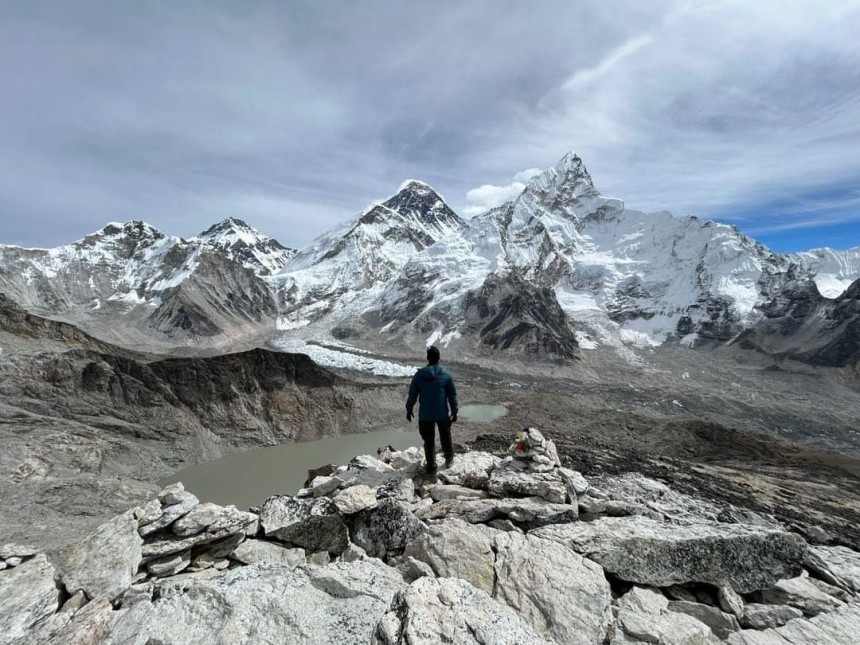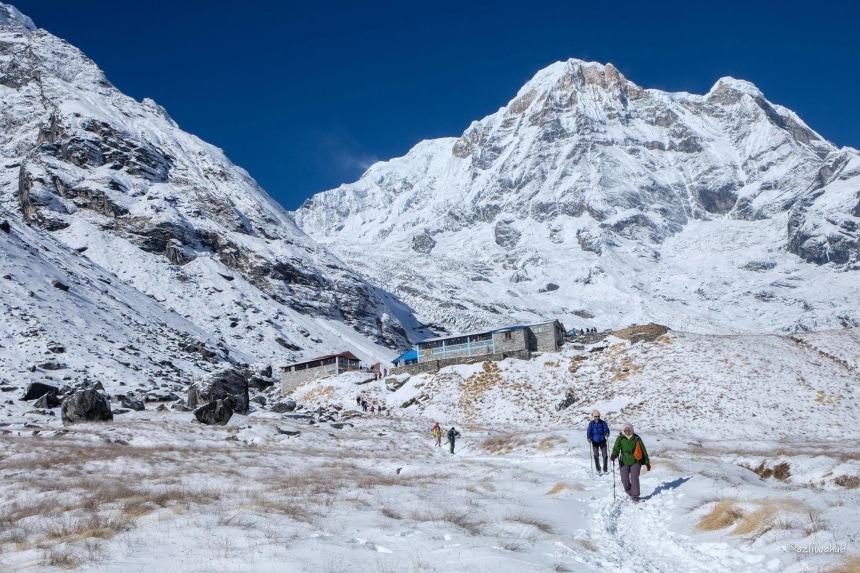
Both offer breathtaking landscapes, unique cultural experiences, and a sense of accomplishment. In this blog post, we will compare and contrast these two treks, considering factors such as difficulty, scenery, cultural immersion, accessibility, and overall experience. Join us as we delve into the Everest Base Camp vs. Annapurna Base Camp Trek debate to help you choose the ultimate Himalayan adventure.
1. Difficulty and Altitude
The Everest Base Camp Trek is known for its higher altitude and more challenging terrain. The trek reaches a maximum altitude of 5,364 meters (17,598 feet) at Everest Base Camp. The trail involves steep ascents, rocky paths, and the risk of altitude sickness. Proper acclimatization and physical fitness are crucial for a successful trek.
On the other hand, the Annapurna Base Camp Trek is considered less challenging in terms of altitude. The maximum altitude is 4,130 meters (13,550 feet) at Annapurna Base Camp. The trail is relatively more gradual, with fewer steep ascents and descents. It is generally considered more accessible to trekkers of varying fitness levels.
2. Scenery and Mountain Views
Both treks offer stunning scenery and panoramic mountain views, but with different highlights:
The Everest Base Camp Trek provides unparalleled views of the world's highest peak, Mount Everest, along with other towering peaks like Lhotse, Nuptse, and Ama Dablam. The trek takes you through the rugged beauty of the Khumbu region, with its dramatic landscapes, glacial moraines, and Sherpa villages.
The Annapurna Base Camp Trek offers a diverse range of landscapes, from lush green forests to alpine meadows and high mountain vistas. The trail provides breathtaking views of the Annapurna mountain range, including Annapurna I, Annapurna South, Machhapuchhre (Fishtail), and Hiunchuli. The trek also takes you through charming Gurung villages and terraced fields.
3. Cultural Immersion
Both treks offer opportunities for cultural immersion and interaction with local communities:
The Everest Base Camp Trek allows you to experience the unique Sherpa culture of the Khumbu region. You'll pass through traditional Sherpa villages like Namche Bazaar, Tengboche, and Dingboche, where you can visit monasteries, witness religious ceremonies, and learn about Sherpa traditions and way of life.
The Annapurna Base Camp Trek takes you through culturally rich villages inhabited by Gurung and Magar communities. You'll have the chance to interact with locals, visit traditional houses, and learn about their customs, music, and dance. The trek also offers opportunities to explore the vibrant city of Pokhara, known for its lakeside charm and stunning mountain views.
4. Accessibility and Infrastructure
In terms of accessibility and infrastructure, there are notable differences between the two treks:
The Everest Trekking requires a domestic flight from Kathmandu to Lukla, followed by a trek through the Khumbu region. The trail is well-established, with teahouses and lodges providing accommodation and meals along the way. However, due to its popularity, the trail can be crowded during peak seasons.
The Annapurna Base Camp Trek starts from Nayapul, which is easily accessible by road from Pokhara. The trail passes through the Annapurna Conservation Area, where teahouses and lodges are available for accommodation and meals. The trek offers a range of route options, allowing for flexibility in itinerary planning.
5. Overall Experience and Trekking Season
The overall experience of each trek is subjective and depends on personal preferences:
The Everest Base Camp Trek is renowned for its challenging nature, high altitude, and the opportunity to witness the world's highest peak. It attracts adventurers seeking a more physically demanding and remote trekking experience. The best time to undertake this trek is during the spring (March to May) and autumn (September to November) seasons.
The Annapurna Base Camp Trek is considered more accessible and suitable for trekkers of varying fitness levels. It offers a diverse range of landscapes, cultural experiences, and stunning mountain views. The trek is popular among those seeking a balanced combination of natural beauty and cultural immersion. The best time to undertake this trek is during the spring (March to May) and autumn (September to November) seasons.
Conclusion
Choosing between the Everest Base Camp Trek and the Annapurna Base Camp Trek depends on your preferences, fitness level, and the type of experience you seek. The Everest Base Camp Trek offers a more challenging and remote adventure, with unparalleled views of Mount Everest. On the other hand, the Annapurna Base Camp Trek provides a diverse range of landscapes, cultural immersion, and stunning mountain vistas. Both treks offer unique experiences that will leave you with lifelong memories. Whichever trek you choose, the Himalayas will undoubtedly captivate your heart and soul.



